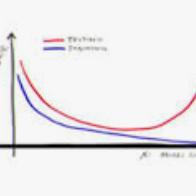Can we distinguish between two wireless transmitters sending exactly the same message, using the same protocol? The opportunity for doing so arises due to subtle nonlinear variations across transmitters, even those made by the same manufacturer. Since these effects are difficult to model explicitly, we investigate learning device fingerprints using complex-valued deep neural networks (DNNs) that take as input the complex baseband signal at the receiver. We ask whether such fingerprints can be made robust to distribution shifts across time and locations due to clock drift and variations in the wireless channel. In this paper, we point out that, unless proactively discouraged from doing so, DNNs learn these strong confounding features rather than the nonlinear device-specific characteristics that we seek to learn. We propose and evaluate strategies, based on augmentation and estimation, to promote generalization across realizations of these confounding factors, using data from WiFi and ADS-B protocols. We conclude that, while DNN training has the advantage of not requiring explicit signal models, significant modeling insights are required to focus the learning on the effects we wish to capture.
翻译:我们能否区分使用同一协议发送完全相同信息的两个无线发报机? 这样做的机会来自不同发报机之间微妙的非线性变异, 甚至由同一制造商制造的发报机之间。 由于这些影响难以明确模型模型,我们用复杂的、价值深厚的神经网络(DNNs)调查学习设备指纹,将接收器的复杂的基带信号输入到接收器中。 我们问,这些指纹能否因无线频道的时钟漂移和变异而在时间和地点之间分配移动而变得坚固。 在本文中,我们指出,除非积极主动地阻止这样做, DNNS学会了这些紧密的相近特征,而不是我们试图学习的非线性设备特性。 我们根据放大和估计,提出和评估各种战略,以便利用WiFi和ADS-B协议的数据,促进这些汇合因素的全局化。 我们的结论是,虽然DNN培训的好处是不需要明确的信号模型,但需要重要的模型洞察到我们希望捕捉到的效果。




